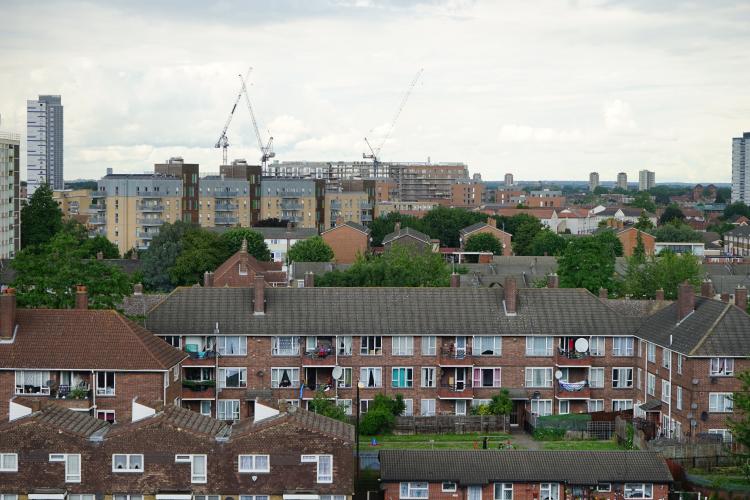
Midwest residential energy efficiency programs have reported shocking deferral rates ranging from 20 to 60% due to health and safety concerns in households, ultimately preventing efficiency upgrades from being completed
Deferrals are driven by “walkaway issues,” which are problems within the housing structure that pose risks to the health and safety of both the resident and the contractor, or physically prevent the actual retrofit. Such issues are common in urban, suburban and rural communities alike. Unsurprisingly, the majority of deferrals can occur under the income qualified residential program sector
While this context paints a bleak picture of pervasive health hazards and missed opportunities, there are also innovative solutions to address these issues. For example, energy efficiency contractors can play a role within a broader network of community-based organizations, housing and energy service providers to connect households with targeted assistance programs.
Energy efficiency contractors, specifically energy auditors/assessors, are an initial touchpoint and are well-positioned to identify issues and solutions. For this reason, it is also valuable to have contractors that are interdisciplinary, like a healthy home evaluator, who can identify home health hazards and provide prioritized recommendations for addressing the issues in addition to energy savings measures. From there, a collaborative network is needed to coordinate the various programs and funds and provide households with an organized process for accessing the resources available to them. The 2-1-1 service, a nationwide hotline connecting communities with local housing and utilities assistance programs among other health and human services, is one existing resource that can be leveraged to this end.
A collaborative network could build upon existing resources and effectively address the issue of walkaways in two ways. First, a referral network could ensure that when an issue is identified, households are referred to an appropriate assistance program in a timely manner. Second, collaboration could develop and improve this process over time, addressing more complex and persistent issues, such as clarifying and verifying eligibility, coordinating application processes, data sharing and financing.
Similar yet smaller-scale strategies and non-traditional partnerships have proven effective and are replicable. For example, community action agencies in St. Louis and western Wisconsin are leveraging relationships with utilities, housing agencies and foundations, community-based organizations, local banks and healthcare institutions to maximize funding sources. Elevate Energy partnered with (formerly) AMITA Health and the Green and Healthy Homes Initiative (GHHI) to leverage community health needs assessments through the Affordable Care Act and conduct a lead intervention pilot. The GHHI model takes a whole home approach, aligns and combines funding from philanthropy, government and the private sector then coordinates delivery of lead hazard reduction, asthma trigger control, fall/injury prevention, efficiency, weatherization and housing rehab. To address the real extent of the problem, such solutions need to be scaled up to ensure statewide or regional collaboration.
MEEA engages in conversations in multiple states on improving income qualified energy efficiency program coordination and design through stakeholder working groups. MEEA recognizes that addressing the issue of high deferral rates due to substandard housing is necessary to meaningfully increase equity amongst efficiency program recipients. Utility and state efficiency programs and trade allies can play a leading role in addressing health and safety issues. A broader collaborative network including utilities, agencies, communities, housing organizations, financial and healthcare institutions could convene regularly and improve the process, identify and combine funding opportunities and measure progress.
Considering COVID-19 has increased the number of people struggling economically, staying indoors with poor air quality and using more energy as they try to avoid the respiratory illness for the foreseeable future, it is more important than ever that we leverage existing processes of coordination and create new channels to solve the walkaway problem. Reach out to MEEA with questions on the information, strategies and organizations cited in this blog or perspectives on additional efforts and practices.
References
Capps, L., Curry, L., & Levin, E. (2019). Energy-Plus-Health Playbook. Winooski: Vermont Energy Investment Corporation.
Jacobs, D. E. (2011). Environmental Health Disparities in Housing. American Journal of Public Health, 115-122.
Kirby, S. (2017, June 2). June is National Healthy Homes Month. Retrieved from North Carolina State University Web site: https://healthyhomes.ces.ncsu.edu/2017/06/june-is-national-healthy-homes-month/
National Association for State Community Services Programs. (n.d.). Couleecap's Weatherization Deferral Program Makes Homes Safer and More Energy Efficient. Retrieved from NASCSP Web site: https://nascsp.org/success-story/couleecaps-weatherization-deferral-program-makes-homes-safer-and-more-energy-efficient/
[1] Figure drawn from several sources including an individual utility’s data